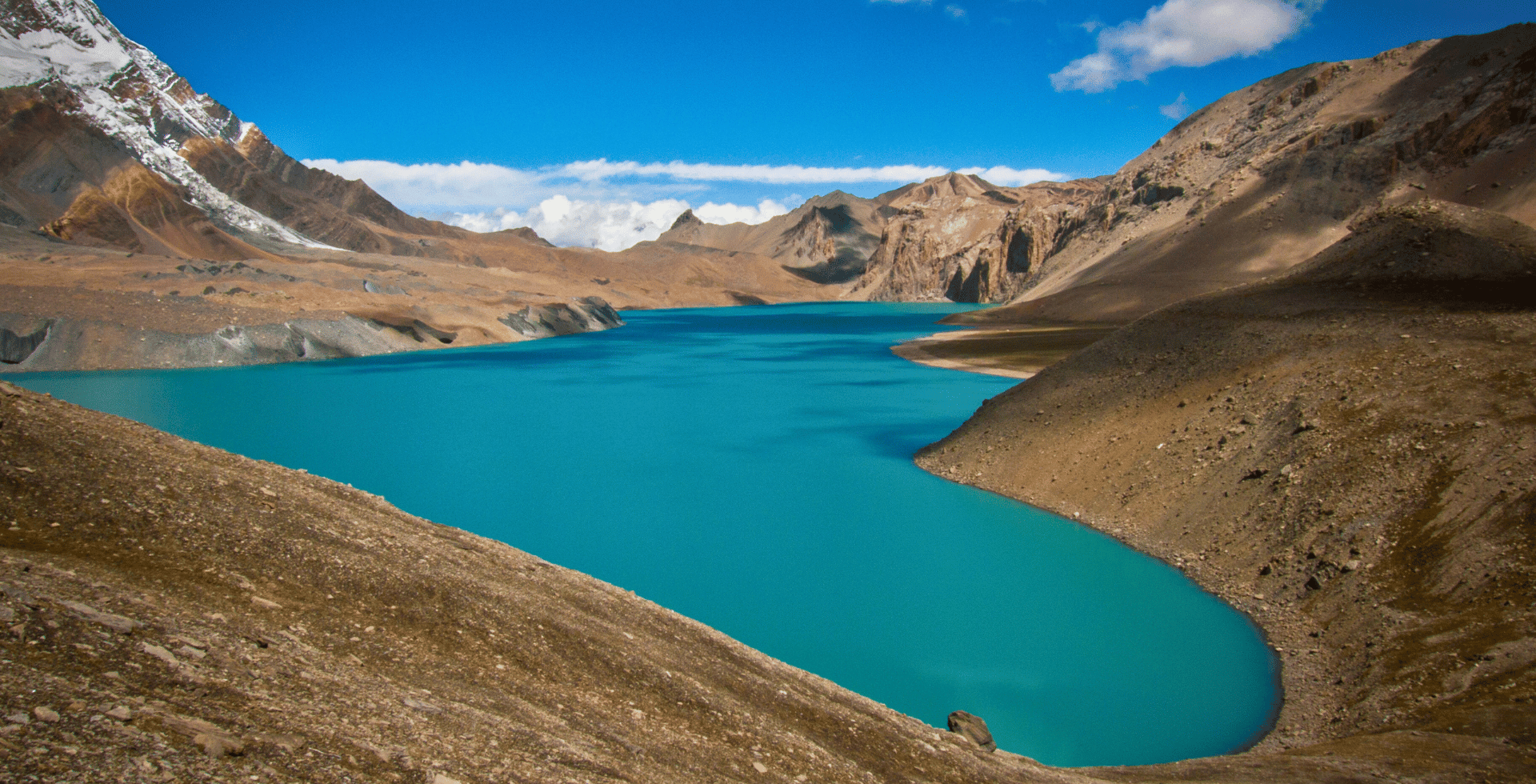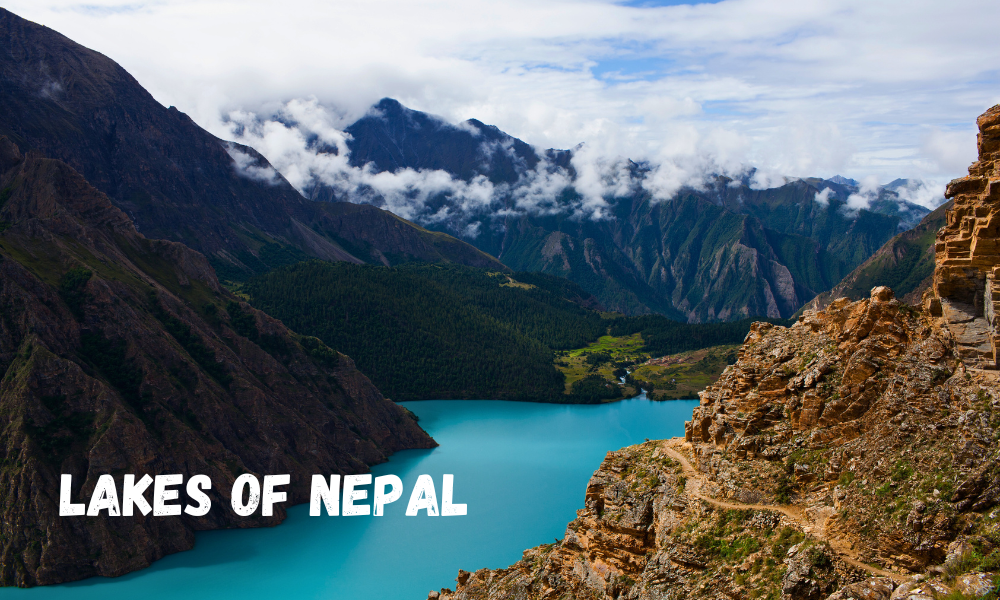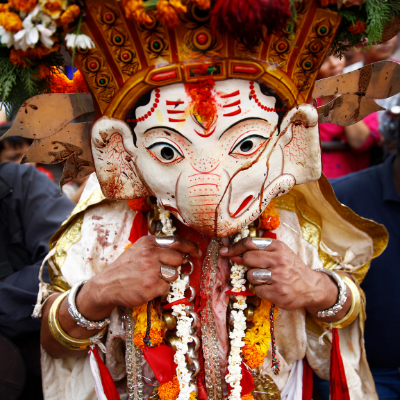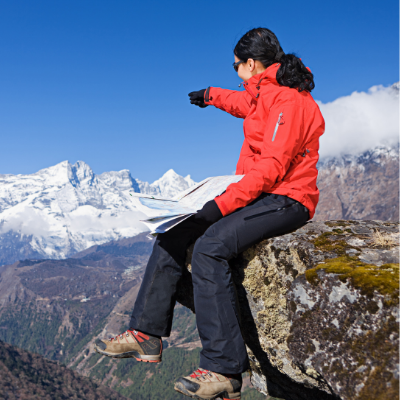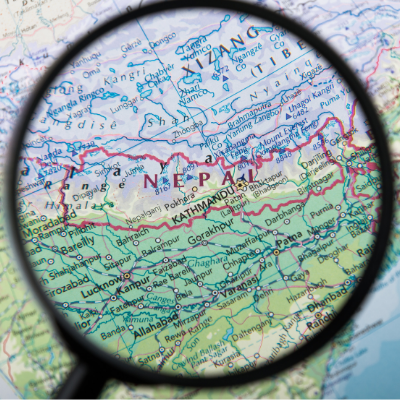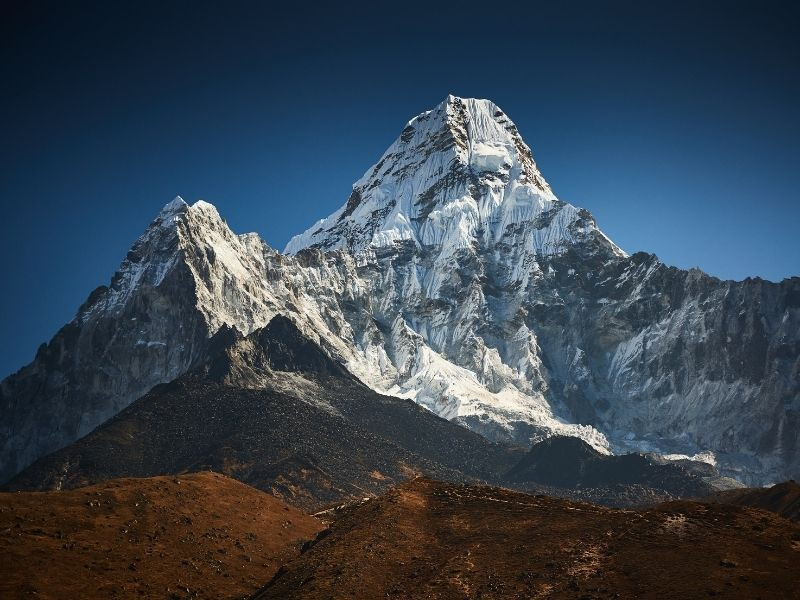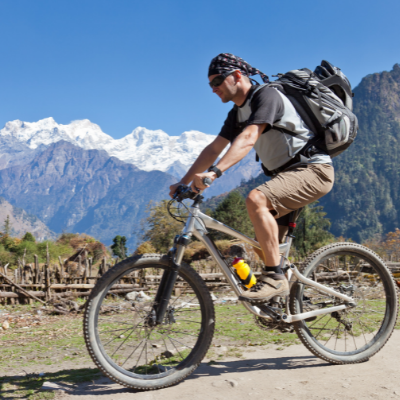Nepal is a landlocked country in the heart of the Himalayan range in South Asia bordered by China to the north and India to the south, east, and west. Nepal spans an area of 147,516 square kilometers, exhibiting a rich array of geographical and climatic variations.
Although small in size, Nepal's geography is nothing short of diverse and magnificent. From snow-capped mountains and highland pastures to lush hills and fertile plains, it offers an extraordinary range of landscapes that beautifully unfold within a short lateral distance. The country's geography is primarily divided into three main regions: the Terai, the Hills, and the Himalayas.
The Himalayas: This region, the northernmost and the most striking is home to eight of the ten highest peaks in the world, including Mount Everest and Kanchenjunga. It features a cold alpine climate with spectacular glaciers, deep valleys, and high-altitude pastures.
The Hills (Pahad): This central region of Nepal is characterized by mountains, valleys, and lakes. The topography ranges from lush forests to terraced fields, used for farming, and encompasses significant cultural centers, including the capital city, Kathmandu.
The Terai: The southernmost region of Nepal, the Terai, is an extension of the Gangetic plains of India. It boasts fertile land and a subtropical climate, making it the agricultural heartland of the country.
The rich geographical diversity of Nepal contributes significantly to its unique biodiversity. It hosts numerous national parks and conservation areas that protect a wide range of flora and fauna. Some of these include the Chitwan National Park, known for its Bengal tigers and one-horned rhinos, and the Sagarmatha National Park, which includes Mount Everest.
The geographical tapestry of Nepal also plays a significant role in the country's culture and lifestyle. From the Sherpa communities in the Himalayas, who are known for their mountaineering skills, to the Tharu people in the Terai, who are famous for their unique art and architecture, Nepal's diverse geography nurtures a rich cultural heritage.
Nepal's geographical diversity is not only a visual spectacle but also a vital element shaping its biodiversity, cultural dynamics, and economic activities. It truly is a paradise for nature enthusiasts, adventure seekers, and cultural explorers alike.
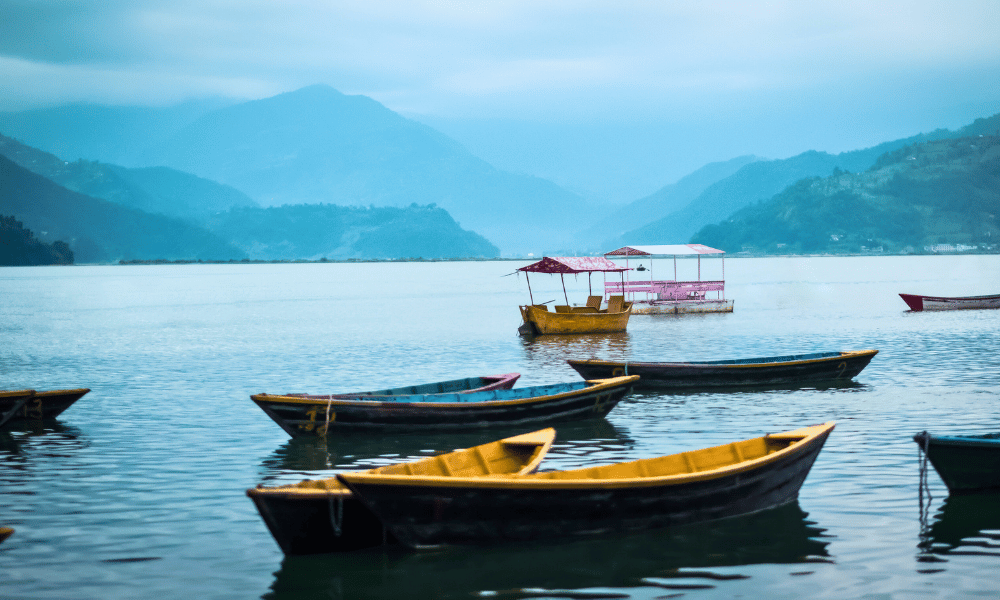
The Significance of Lakes in Nepal: Beyond Just Scenic Beauty
Lakes in Nepal play a crucial role in various aspects - ecological, cultural, economic, and recreational, making them highly significant in the context of the country's diverse landscape.
Ecological Significance:
Nepal's lakes are important biodiversity hotspots, providing habitats for a wide range of flora and fauna. They host a variety of species, including migratory birds, fish, reptiles, and aquatic plants. Some of these species are endemic, meaning they are found nowhere else in the world.
Furthermore, these water bodies play an important role in maintaining the ecosystem's overall health. They act as natural water storage systems, help in groundwater recharge, and are vital in sustaining the water cycle. Lakes also contribute to climate regulation and carbon sequestration.
Cultural Significance:
Many lakes in Nepal hold significant religious and cultural value for the local communities. They are often associated with historical legends and myths, adding a mystic charm to their natural beauty.
For instance, Gosaikunda Lake in Langtang National Park is considered a sacred site by Hindus and Buddhists. Thousands of pilgrims visit this high-altitude lake during the Janai Purnima festival. Similarly, Rupa and Begnas Lakes in Pokhara hold important roles in local cultural rituals and festivals.
Economic Significance:
Lakes significantly contribute to Nepal's economy. They serve as a source of livelihood for many local communities, providing opportunities for fishing and other aquatic resources.
In addition, lakes play a key role in attracting tourists, boosting the country's tourism industry. Whether it's boating in the famous Phewa Lake, exploring the unique biodiversity of Rara Lake, or undertaking a challenging trek to Tilicho Lake, these water bodies offer a range of activities for visitors, contributing significantly to local and national economies.
Recreational Significance:
Beyond their ecological, cultural, and economic roles, lakes in Nepal serve as popular recreational sites. They offer serene environments for relaxation and activities such as boating, fishing, swimming, bird watching, and photography. They are also important sites for educational and scientific research.
The significance of lakes in Nepal is multi-faceted. They are a testament to the country's rich biodiversity and cultural heritage and key contributors to the economy. The preservation and sustainable management of these valuable resources are therefore essential for the country's overall well-being.
The total number of lakes, their distribution, and types
Nepal has over 6,000 rivers, rivulets, and tributaries, but precise figures for the total number of lakes are not readily available. The country's lakes vary widely in size and are distributed across various regions, reflecting the country's diverse terrain.
Distribution of Lakes:
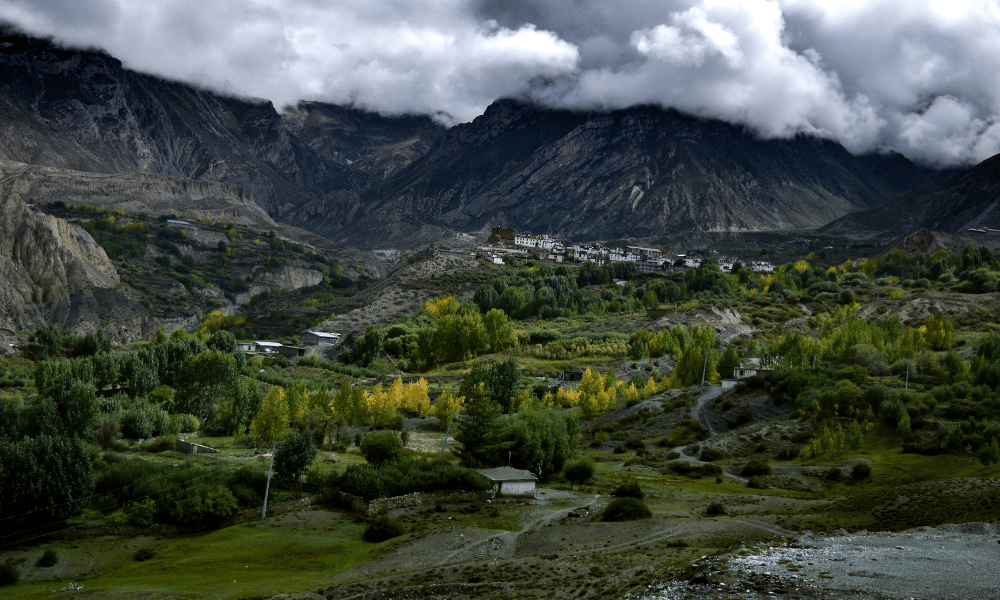
The lakes in Nepal are largely distributed across its diverse topography: from the high Himalayan region down to the low-lying Terai plains.
-
Himalayan Region: Known for its high-altitude glacial lakes. These include the famous Gosaikunda in Langtang National Park, Tilicho Lake, which is considered one of the highest lakes in the world, and Rara Lake, the largest lake in Nepal.
-
Hill Region: Contains a significant number of lakes. Pokhara Valley, located in this region, is famous for its seven lakes, including Phewa Lake, Rupa Lake, and Begnas Lake.
-
Terai Region: This low-lying plain also hosts multiple lakes, although not as prevalent as in the other two regions. One significant example is Bish Hazari Lake in Chitwan.
Types of Lakes:
Nepal's lakes can be classified into different types based on their formation:
-
Glacial Lakes: Formed by melted glacial water, often found at higher altitudes. Examples include Gosaikunda, Tilicho, and Imja Lakes.
-
Tectonic Lakes: Formed due to the movements and disruptions of the Earth's crust. Rara Lake, the largest lake in Nepal, is a prime example.
-
Oxbow Lakes: These are formed when a meandering river changes course. They are more prevalent in the Terai region.
-
Artificial (Man-made) Lakes: These are formed by human activities, often for purposes like hydroelectric power generation or irrigation. Indra Sarovar, also known as Kulekhani Dam, is a man-made lake in Nepal.
These figures and classifications offer a broad understanding of the lakes in Nepal, contributing to the country's rich biodiversity, cultural heritage, and economic activity. The figures may need to be updated as new research and exploration continue to add to our knowledge about this nation's vast natural resources.
Major Lakes in Nepal
The major lakes in Nepal include Rara Lake, the largest in the country, situated amidst the pristine Rara National Park, and Shey Phoksundo Lake, famed for its striking turquoise color. Fewa Lake, located in the tourist city of Pokhara, is renowned for its reflection of Mount Machhapuchhre and the sacred Tal Barahi Temple situated on an island in the lake. Begnas Lake, also in Pokhara, is the city's third-largest lake, known for its tranquility. Gosaikunda Lake is a high-altitude freshwater lake considered sacred by Hindus and Buddhists, and Tilicho Lake, another high-altitude lake, holds the record for being one of the highest freshwater lakes in the world. These lakes, each unique and majestic, significantly contribute to Nepal's biodiversity, cultural heritage, and local economies, thereby underlining the necessity of their preservation.
1. Rara Lake
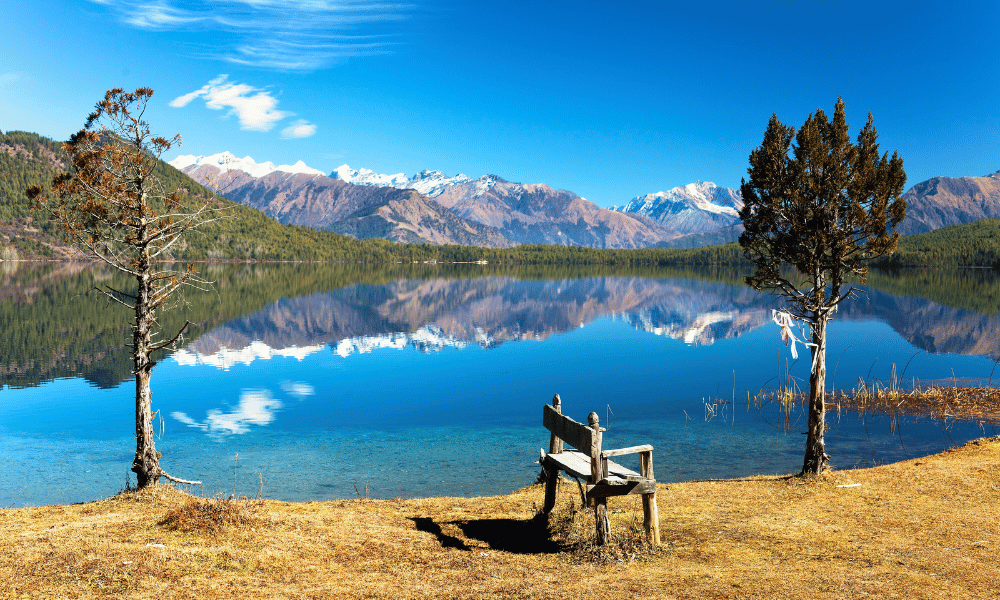
Rara Lake, the largest lake in Nepal, is often referred to as the 'Queen of Lakes'. Its extraordinary beauty has made it a major attraction for both domestic and international tourists.
-
Location: Rara National Park, Mugu District, Western Nepal.
-
Altitude: Approximately 2,990 meters (9,810 feet).
-
Size: The lake spans about 10.8 square kilometers and reaches depths of up to 167 meters (548 feet).
-
Unique features: Rara Lake is renowned for its magnificent setting amidst a tranquil and pristine environment. Its blue waters are surrounded by verdant forests and offer stunning reflections of the snow-capped Himalayas.
-
Significance: The lake lies within the boundaries of Rara National Park, which houses a variety of flora and fauna, making it an ecological treasure.
2. Gosaikunda Lake
Gosaikunda Lake, situated in Nepal's Langtang National Park, is considered one of the highest and holiest lakes in the world.
-
Location: Langtang National Park, Rasuwa District, Central Nepal.
-
Altitude: Approximately 4,380 meters (14,370 feet).
-
Size: The lake covers an area of about 13.8 hectares.
-
Unique features: Gosaikunda Lake is surrounded by high mountains on all sides and remains frozen for six months from October to June. It is also one of the primary sources of the Trishuli River.
-
Significance: This lake holds great religious significance for Hindus and Buddhists. Every year during the Janai Purnima festival, thousands of pilgrims visit the lake for a holy dip.
3. Tilicho Lake
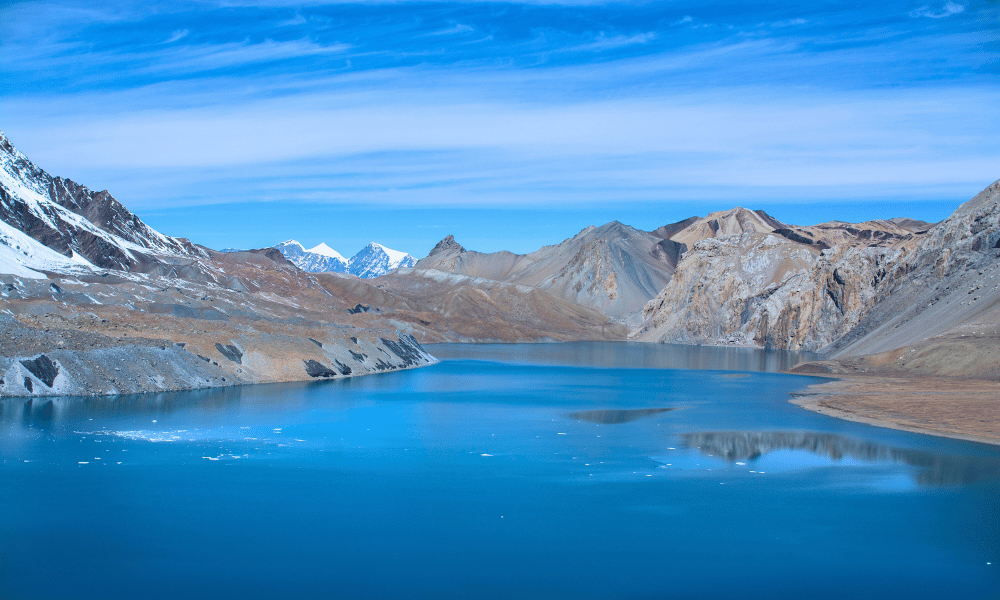
Tilicho Lake is often referred to as the lake situated at the highest altitude in the world.
-
Location: Annapurna range, Manang District, Western Nepal.
-
Altitude: Approximately 4,919 meters (16,138 feet).
-
Size: The lake spans about 4.8 square kilometers.
-
Unique features: The lake is surrounded by the snowy peaks of the Annapurna and Dhaulagiri mountains, offering breathtaking scenic beauty. The arduous trek to reach Tilicho Lake is a challenge that many adventure enthusiasts undertake.
-
Significance: Tilicho Lake has some religious significance as it is mentioned in the ancient epic Ramayana. It is believed to be the ancient Kak Bhusundi Lake, where sage Kak Bhusundi narrated the Ramayana to Garuda, the mount of Lord Vishnu.
4. Shey Phoksundo Lake
Shey Phoksundo Lake, often lauded for its deep-blue and emerald-green hues, is located in Dolpa District, in the Karnali zone of western Nepal. The lake lies within the boundaries of Shey Phoksundo National Park, the country's largest national park.
-
Location: Dolpa District, Nepal.
-
Altitude: Approximately 3,611.5 meters (11,849 feet).
-
Size: The lake spans about 4.8 square kilometers and reaches depths of up to 145 meters (476 feet), making it the deepest lake in Nepal.
-
Unique features: Shey Phoksundo is known for its stunning turquoise color, high altitude, and the spectacular waterfall nearby, known as Phoksundo Waterfall or Sundardhunga Falls. The lake is devoid of aquatic life, which gives it crystal-clear water.
-
Significance: This lake holds significant religious value for Buddhists and followers of the Bon religion. The surroundings of the lake are dotted with several stupas and gompas (monasteries).
5. Begnas Lake
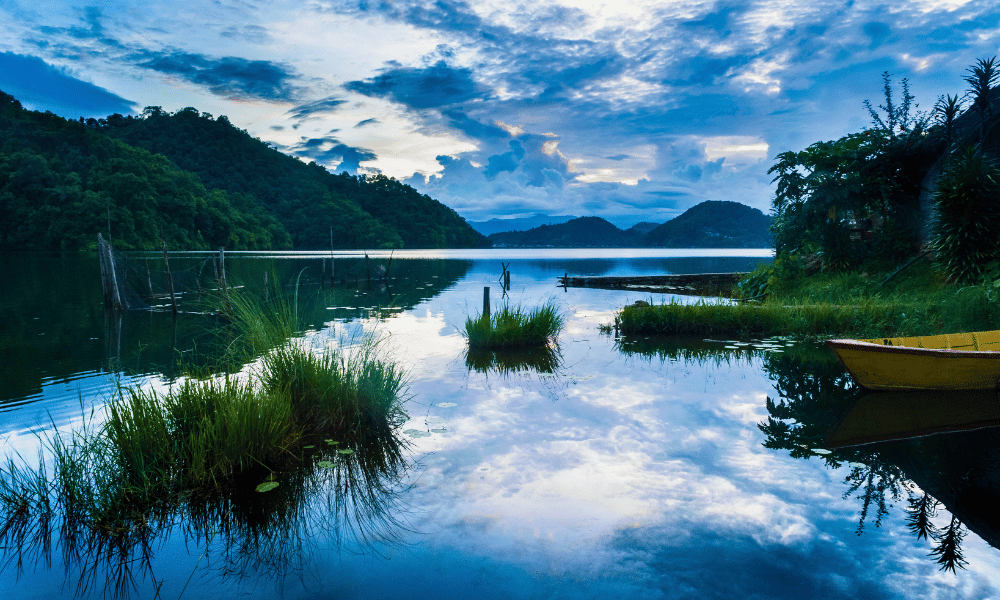
Begnas Lake is the third largest lake in Nepal and the second largest, after Phewa Lake, among the eight lakes in Pokhara Valley.
-
Location: Pokhara, Lekhnath.
-
Altitude: Approximately 650 meters (2,133 feet).
-
Size: The lake covers an area of 3.28 square kilometers.
-
Unique features: The lake is famous for its clear reflection of the majestic Himalayas. It's a freshwater lake, sourced by the monsoon rains and several perennial streams.
-
Significance: Begnas Lake is an important part of the local economy. Locals use the lake for irrigation and fisheries. The lake also serves as a popular destination for boating, especially among local tourists.
6. Fewa (or Phewa) Lake
Fewa Lake is the second-largest lake in Nepal and the largest in Pokhara. It is one of the most iconic landmarks of Nepal, known for its stunning view of the mountains, especially Machhapuchhre and the Annapurna range.
-
Location: Pokhara, Kaski District.
-
Altitude: Approximately 742 meters (2,434 feet).
-
Size: It covers an area of about 4.43 square kilometers.
-
Unique features: The lake is famous for the beautiful reflection of Mount Machhapuchhre on its serene water. On the eastern side of the lake, there's a lush forested hill known as the "Forest of the Lake's Waterside," which houses diverse flora and fauna. In the center of the lake, there's a small island hosting the Tal Barahi Temple, a significant religious site for Hindus.
-
Significance: Fewa Lake is a major tourism hotspot, with activities such as boating, canoeing, and kayaking. The lake also plays a vital role in supporting the local economy.
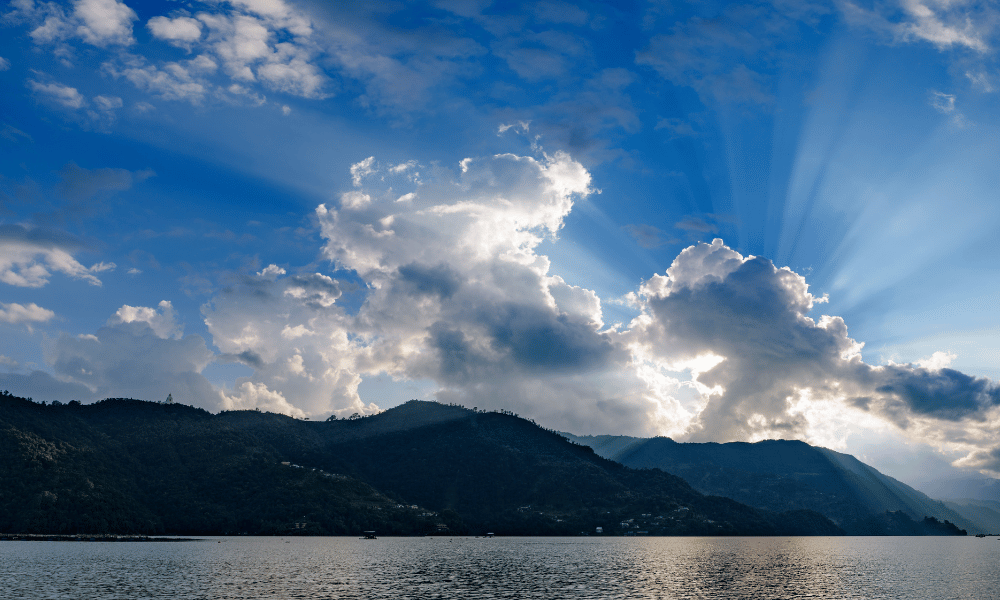
7. Gokyo Lakes
The Gokyo Lakes are a group of glacial lakes situated in the Gokyo Valley of the Sagarmatha National Park, within the Solu-Khumbu region of Nepal. These lakes are renowned for their natural beauty, surrounded by towering Himalayan peaks and pristine alpine landscapes.
Location: Gokyo Valley, Sagarmatha National Park, Solu-Khumbu region, Nepal.
Altitude: The Gokyo Lakes are located at an elevation ranging from approximately 4,700 to 5,000 meters (15,400 to 16,400 feet) above sea level.
Size: The Gokyo Lakes consist of a series of six main lakes, namely Gokyo Cho, Thonak Cho, Ngozumpa Cho, Gyazumpa Cho, Tanjung Cho, and Longbanga Cho. These lakes collectively cover an area of about 485 acres.
Unique features: The Gokyo Lakes are known for their mesmerizing turquoise blue waters, reflecting the surrounding snow-capped peaks, including Cho Oyu, the sixth-highest mountain in the world. The lakes are fed by the Ngozumpa Glacier, which is the longest glacier in Nepal. The region around the lakes is also home to abundant wildlife, including Himalayan thars, musk deer, and various species of birds.
Significance: The Gokyo Lakes hold both natural and cultural significance. They are considered sacred by the local Sherpa community and hold a religious significance akin to the holy lakes of Gosainkunda and Mansarovar. These lakes also serve as a crucial water source for the inhabitants of the region and act as a watershed for the Dudh Koshi River, a tributary of the mighty Ganges.
Each of these lakes, with its unique characteristics and natural beauty, significantly adds to the geographical and cultural richness of Nepal.
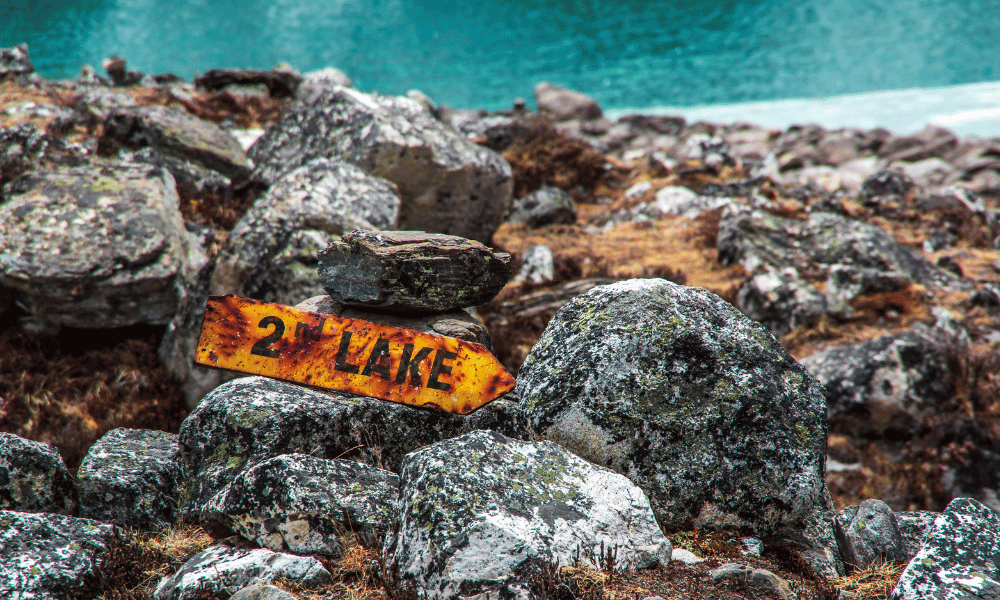
Lakes as Ecosystems
Lakes serve as vital ecosystems, supporting a rich variety of flora and fauna, contributing to biodiversity, and playing significant roles in nutrient cycling and water supply. They provide essential habitats for various species, including fish, birds, amphibians, insects, and various types of plant life. These organisms interact within the lake ecosystem, contributing to complex food webs. Lakes also offer important ecosystem services such as water purification, flood mitigation, and carbon sequestration. They play a critical role in human livelihoods too, providing resources for activities like fishing, agriculture, and tourism. However, these sensitive ecosystems are susceptible to threats such as pollution, climate change, and over-exploitation, which can lead to biodiversity loss and ecosystem degradation. Thus, maintaining the health of lake ecosystems is of paramount importance for the preservation of biodiversity and sustainable human welfare.
Overview of Aquatic Life in the Lakes of Nepal
The lakes in Nepal host a diverse array of aquatic life, which adds to the rich biodiversity of the country. This includes a variety of fish species, amphibians, and a range of waterfowl and other bird species, many of which use these lakes as nesting grounds. Aquatic plants also thrive in these environments, contributing to the ecosystems both above and below the water surface.
While the exact species composition varies by the lake, common aquatic species found in Nepal's lakes include carp, catfish, snow trout, and varieties of mahseer. In addition, these lakes are a significant habitat for migratory birds during different times of the year.
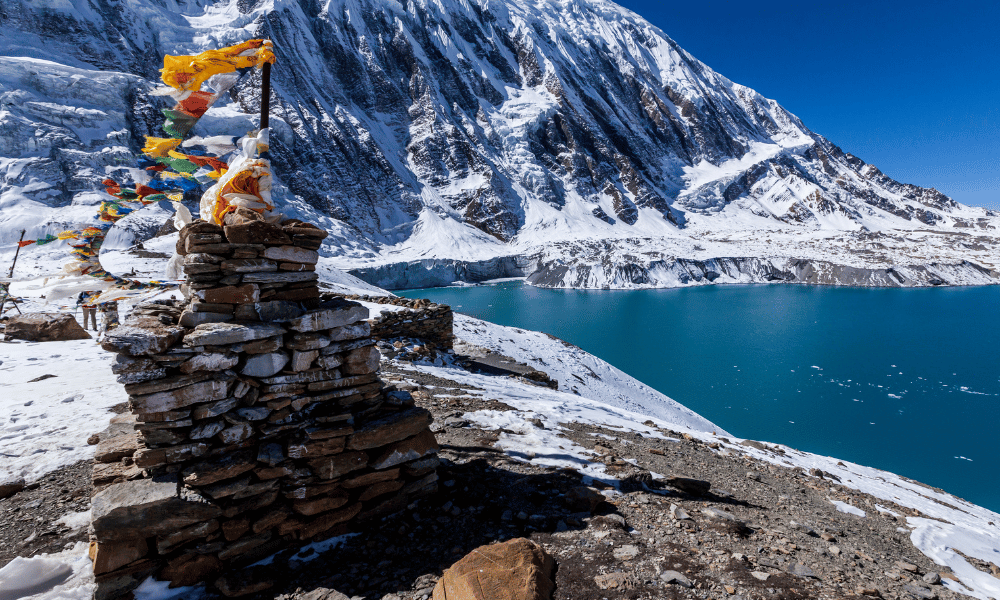
Role of Lakes in Preserving Biodiversity
Lakes play a crucial role in maintaining biodiversity by providing diverse habitats for a wide array of species. They serve as breeding grounds for many aquatic species and provide necessary resources for the survival of numerous terrestrial and avian species as well. Additionally, they play a vital role in ecosystem functions such as nutrient cycling and water filtration, contributing to the overall health and diversity of the surrounding ecosystems.
Endemic Species
As of my last update in September 2021, specific information on endemic species in the lakes of Nepal may not be widely available or well-documented. However, Nepal's unique geographical position and diverse range of ecosystems, from high-altitude lakes to lowland water bodies, suggest the potential for endemic aquatic species. I would recommend checking with the latest scientific studies or local resources for the most recent and accurate information.
Importance of Conservation Efforts
Given their ecological importance and the rich biodiversity they support, the conservation of lakes in Nepal is crucial. Climate change, pollution, and other human activities pose significant threats to these fragile ecosystems. Overfishing and invasive species also pose challenges to native aquatic life.
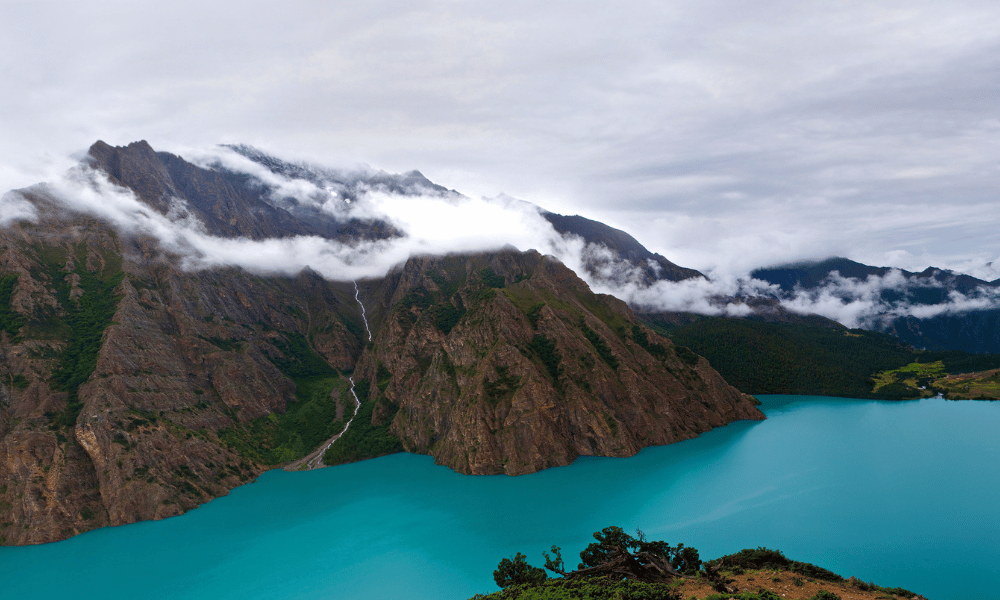
Conservation efforts are vital to preserve these habitats and ensure the survival of the species that depend on them. This includes implementing and enforcing regulations to control pollution and overfishing, promoting sustainable tourism practices, and conducting scientific research to improve our understanding of these ecosystems and how best to protect them.
Furthermore, preserving these lakes isn't just about protecting biodiversity. It's also about safeguarding the cultural heritage and economic livelihoods associated with these water bodies. By investing in the conservation of lakes, we are preserving valuable resources for future generations.
Lakes and Local Communities
Lakes have a profound impact on local communities, serving as critical sources of livelihood, cultural heritage, and recreational enjoyment. They provide resources like fish for food, water for irrigation, and opportunities for tourism-related activities such as boating and birdwatching. In many communities, lakes are also sites of religious significance, hosting festivals and rituals that strengthen cultural bonds. Additionally, the scenic beauty of lakes enhances the quality of life for local residents, providing spaces for relaxation and inspiration. However, these communities are often the most impacted by threats to lake ecosystems, such as pollution, overfishing, and climate change. Hence, the involvement of local communities is crucial in lake conservation efforts, as sustainable practices and local knowledge can significantly contribute to preserving the health and value of these essential water bodies.
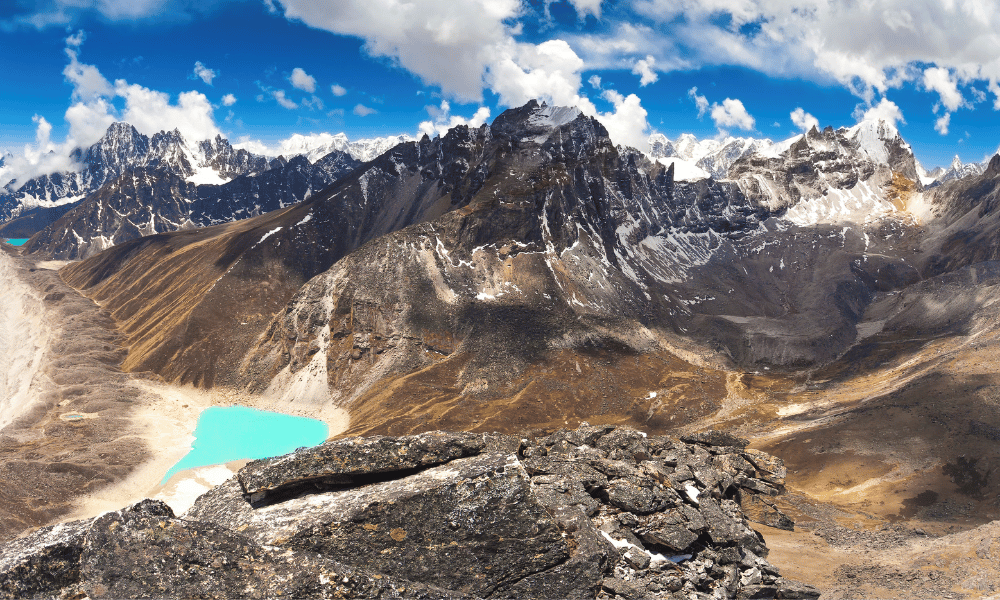
Cultural Significance of Lakes
Lakes in Nepal hold substantial cultural and religious significance. Many are considered sacred by the local communities and are associated with legends and religious beliefs.
-
Gosaikunda Lake: Every year during the Janai Purnima festival (which usually falls in August), thousands of Hindu and Buddhist pilgrims visit this high-altitude lake for a holy dip.
-
Fewa Lake: The Tal Barahi Temple, located on an island in Fewa Lake, is one of the most important religious monuments in Pokhara. Devotees often visit this two-story pagoda to offer prayers to Goddess Barahi.
-
Rara Lake: Apart from its natural beauty, Rara Lake is also significant in the indigenous folklore of the region.
-
Tilicho Lake: Mentioned in the ancient epic Ramayana, this lake has a significant religious connotation.
Role of Lakes in Local Economies
Lakes in Nepal are crucial to the local economies in several ways:
-
Tourism: The stunning beauty of lakes like Fewa, Rara, and Tilicho draws tourists from around the world. This contributes significantly to local and national tourism revenues. Activities such as boating, fishing, bird watching, and trekking are popular among visitors.
-
Fishing: Many local communities depend on the lakes for their livelihood through fishing. Fish from the lakes is a major source of protein for many locals.
-
Water supply: Lakes provide water for household use and irrigation, and in some cases, they also serve as sources of hydroelectric power.
-
Biodiversity conservation: Lakes contribute to maintaining biodiversity, which indirectly supports livelihoods related to forestry, plant collection, and eco-tourism.
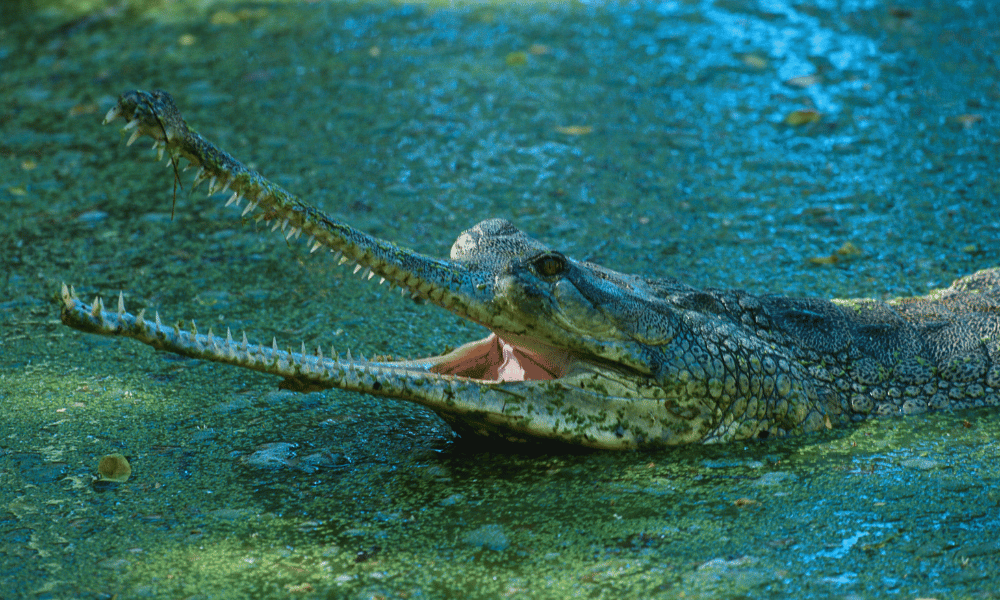
Traditional Practices Associated with Lakes
Many traditional practices in Nepal are centered around lakes. These include religious festivals and rituals, such as the Janai Purnima at Gosaikunda Lake, and the worship of Goddess Barahi at Fewa Lake.
Fishing practices in these lakes often employ traditional methods, passed down through generations. Similarly, traditional rowing boats are commonly used for transportation and leisure on these lakes, a practice that has become an iconic cultural feature, particularly in places like Fewa Lake in Pokhara.
All these aspects reinforce the critical importance of lakes in the ecological, cultural, and economic landscapes of Nepal, and underscore the necessity of their conservation and sustainable use.
Threats to Lakes in Nepal
Various factors have caused damage or risk of damage to the lakes of Nepal. Before we dive into the ways of mitigating those factors, let's get to know the main issues.
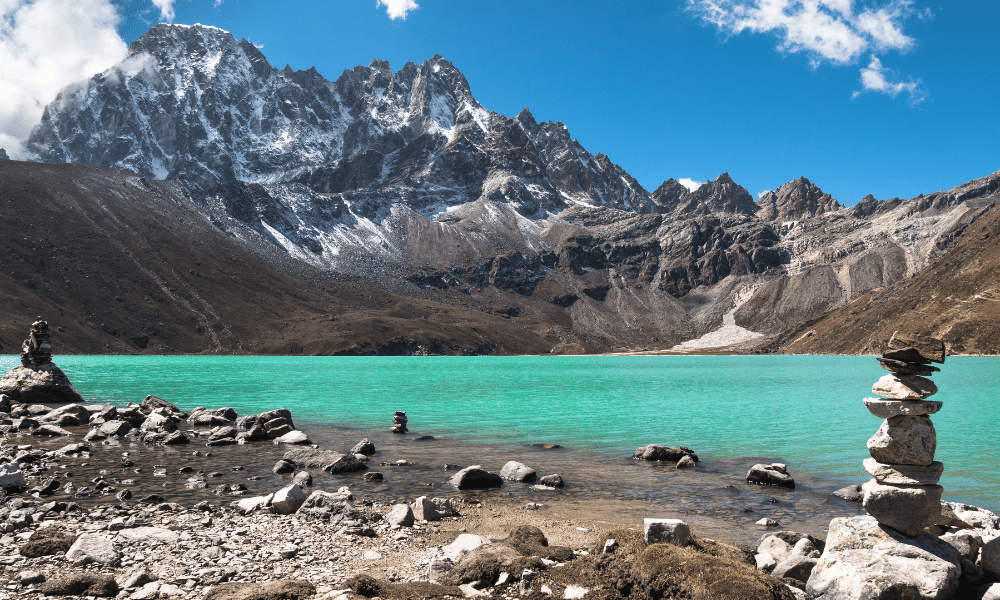
Impact of Climate Change
Climate change poses a significant threat to the lakes of Nepal, particularly those in the Himalayan region. Rising temperatures lead to accelerated glacier melt, which can cause glacial lake outburst floods (GLOFs). These catastrophic events can lead to the loss of human lives, and property, and damage the surrounding ecosystems.
Climate change also affects lake ecosystems directly. Warmer temperatures can alter the physical and chemical characteristics of lakes, affecting their ability to support aquatic life. Changes in precipitation patterns can alter water levels and disrupt the balance of freshwater ecosystems.
Human Activities and Pollution
Human activities such as deforestation, construction, mining, and tourism can increase lake pollution. This pollution can take the form of plastics, untreated sewage, agricultural runoff, and sediment load, all of which can harm the lake's ecosystems.
Overfishing is another significant issue. Unsustainable fishing practices can deplete fish populations and disrupt the balance of aquatic ecosystems.
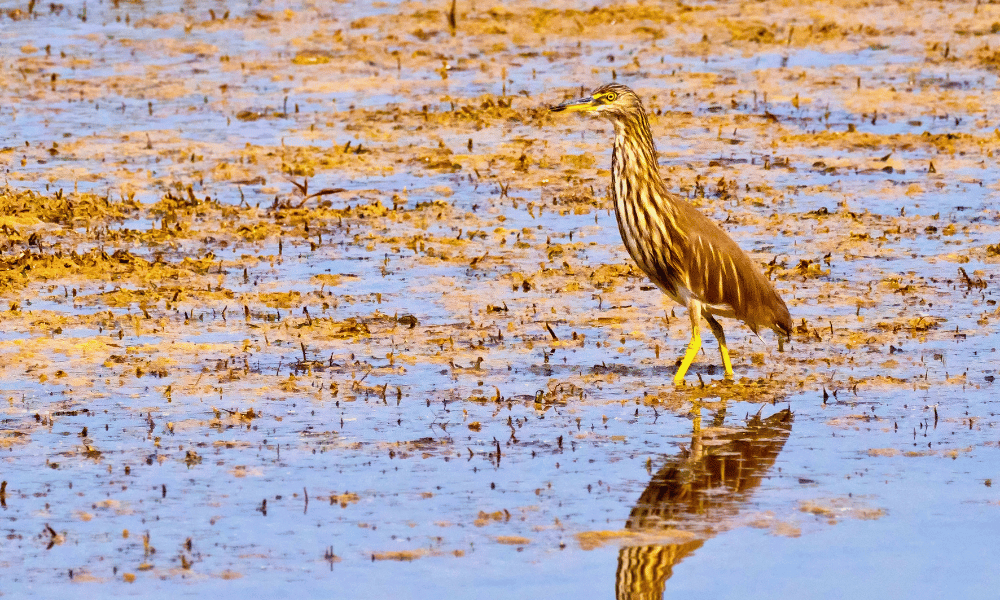
Decrease in Biodiversity
The threats posed by climate change, pollution, and overfishing can lead to a decrease in biodiversity. Aquatic species are particularly vulnerable to changes in water quality and temperature. The loss of any species can disrupt the balance of the ecosystem and could lead to a cascade of impacts on other species.
Consequences of These Threats
The consequences of these threats are numerous and interconnected. They include:
-
Loss of biodiversity: This can disrupt ecosystems, leading to unpredictable changes that can affect species all the way up the food chain.
-
Impact on local economies: Many local communities depend on lakes for their livelihoods, through fishing, tourism, and other activities. The degradation of lakes can therefore have significant economic impacts.
-
Cultural impact: Many of these lakes hold significant cultural and religious importance. Their degradation could lead to the loss of these cultural heritage sites.
-
Health impacts: Polluted water can lead to numerous health problems for the local communities that depend on these lakes for their water supply.
-
Increased risk of natural disasters: Climate change and glacial melt can increase the risk of natural disasters, such as GLOFs, putting local communities at risk.
These threats highlight the urgent need for conservation efforts to protect these valuable ecosystems. These efforts must include mitigating the impacts of climate change, enforcing regulations to prevent pollution and overfishing, and promoting sustainable practices in tourism and local development.
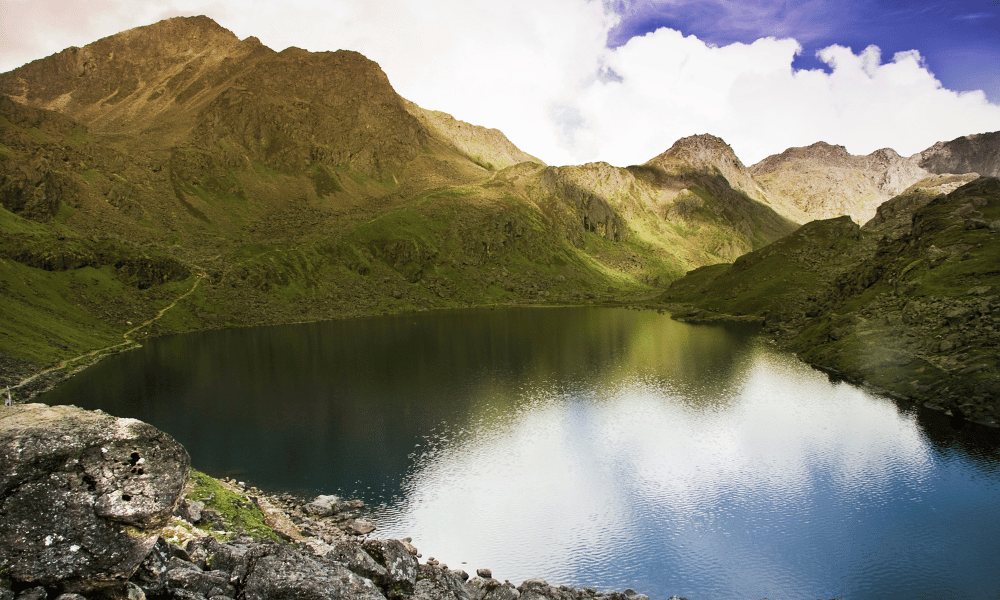
Conservation Efforts
Conservation efforts are pivotal in preserving the natural beauty, ecological significance, and cultural heritage of lakes. These efforts encompass a wide range of activities, including legal protection through regulations and laws, the promotion of sustainable practices, community engagement, and scientific research. Governments, non-governmental organizations (NGOs), and local communities often work together in these endeavors. They enforce regulations to prevent pollution, overfishing, and habitat destruction, promote sustainable tourism and fishing practices, and conduct research to monitor lake health and biodiversity. Successful conservation stories often involve community-based management, where local people take an active role in protecting the lakes that form a vital part of their livelihood and culture. Despite numerous challenges, these collective efforts are crucial in ensuring the long-term sustainability of these valuable ecosystems.
Existing Regulations for Lake Conservation
Nepal has several regulations and laws in place aimed at environmental protection and biodiversity conservation, including the conservation of its lakes.
-
The National Parks and Wildlife Conservation Act, of 2029 (1973) provides legal protection to designated National Parks, which include several lakes, such as Rara Lake and Gosaikunda Lake.
-
The Environment Protection Act, 2053 (1997), and its regulation, the Environment Protection Rules, 2054 (1997), provide guidelines for impact assessments to avoid or minimize the adverse effects of projects on the environment.

Role of Local Communities and Government
Local communities often play a key role in conservation efforts. Community-based conservation programs can be highly effective, as locals have a vested interest in preserving their environment and livelihood. They are often involved in initiatives like sustainable fishing practices, promoting eco-friendly tourism, and spreading awareness about the importance of conservation.
The government plays a crucial role by setting and enforcing regulations, promoting sustainable development, and providing funding for conservation programs. The Department of National Parks and Wildlife Conservation in Nepal is particularly involved in managing and conserving the country's protected areas.
Non-Governmental Organizations (NGOs) and Their Efforts
Several NGOs work on environmental conservation in Nepal, including lake conservation. These include national organizations such as the National Trust for Nature Conservation (NTNC) and international organizations such as World Wildlife Fund (WWF) and BirdLife International.
These organizations undertake various initiatives, including research, community outreach, policy advocacy, and on-the-ground conservation projects. They often work in partnership with the government, local communities, and other stakeholders.
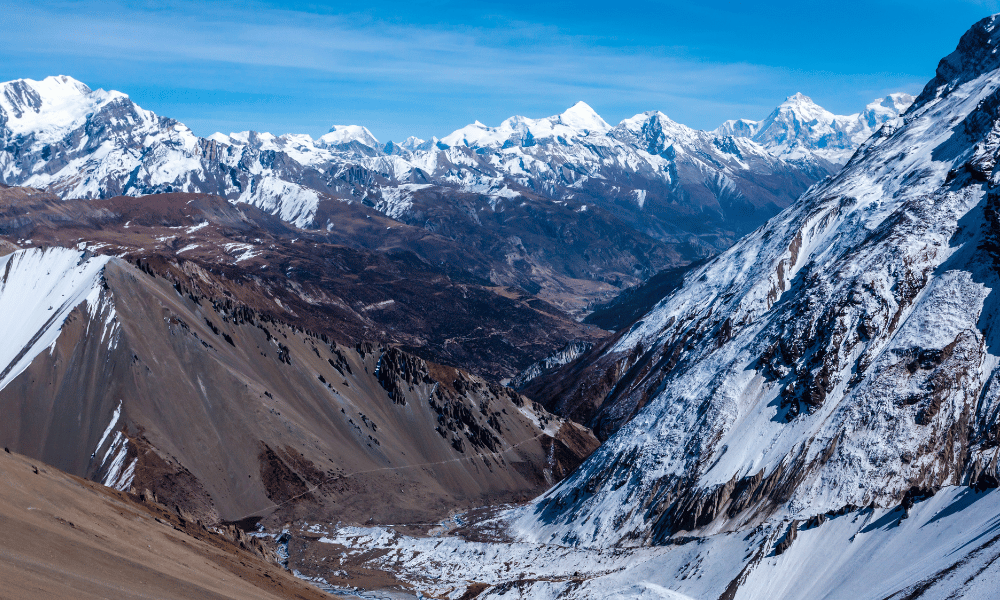
Successful Conservation Stories
Success stories in conservation often involve a combination of government action, NGO support, and community involvement. For instance, the successful conservation of wetlands in the Koshi Tappu Wildlife Reserve, a Ramsar site in Nepal, involves the local communities and various organizations working together to protect the biodiversity of the area.
In terms of lake conservation, increased awareness and stricter regulations have led to some positive outcomes, such as successful cleanup campaigns at Fewa Lake and improved management of visitor impacts in places like Rara Lake and Gosaikunda Lake.
While significant challenges remain, these successes demonstrate that effective lake conservation is possible through a combination of regulation, community involvement, and dedicated efforts by NGOs and other stakeholders.
Touring the Lakes of Nepal
Nepal, with its pristine lakes and surrounding majestic mountains, offers a unique travel experience. Whether you're trekking, boating, or simply soaking in the natural beauty, visiting the lakes of Nepal can be an unforgettable journey.
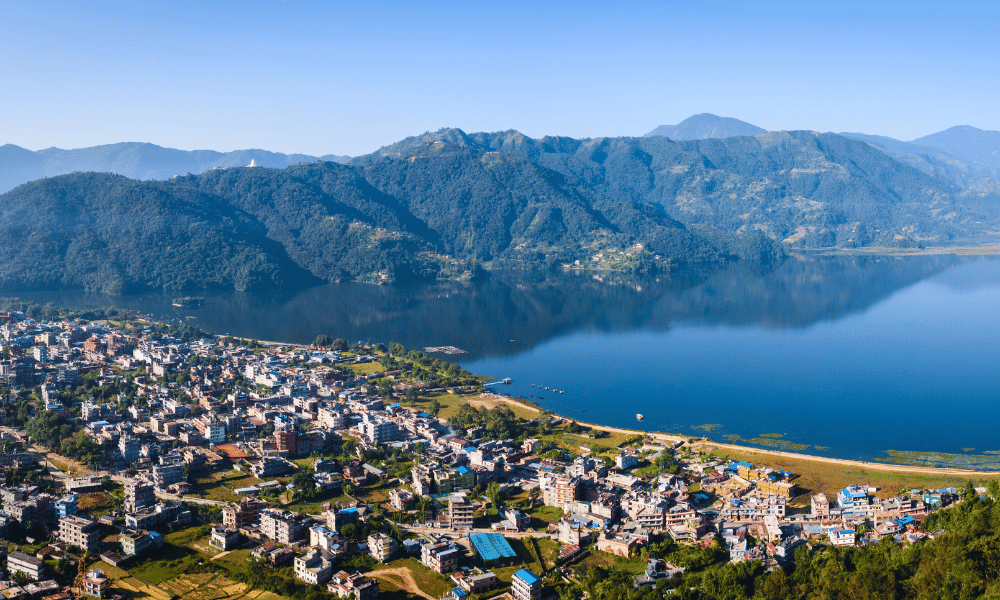
Best Time to Visit
The best time to visit largely depends on the specific lake due to variations in altitude and accessibility:
-
For lower-altitude lakes such as Fewa and Begnas in Pokhara, any time of year can be pleasant. However, the best times are generally October-November (post-monsoon, clear skies) and March-May (springtime, moderate weather).
-
For high-altitude lakes like Gosaikunda, Rara, and Tilicho, the best times are typically during the pre-monsoon months (March-May) and post-monsoon months (September-November), when the skies are clearer, and the trails are less treacherous.
Available Activities
-
Boating: Fewa and Begnas lakes in Pokhara are famous for boating activities. Visitors can rent a rowboat or a paddle boat and enjoy the serenity of the lake surrounded by mountains.
-
Trekking: Lakes such as Gosaikunda and Tilicho offer challenging treks. These routes provide breathtaking views of the surrounding Himalayas.
-
Fishing: With the proper permits, fishing can be an exciting activity in some lakes.
-
Birdwatching: Many lakes in Nepal, including Rara Lake, are fantastic for birdwatching. Don't forget to bring your binoculars to the trip.
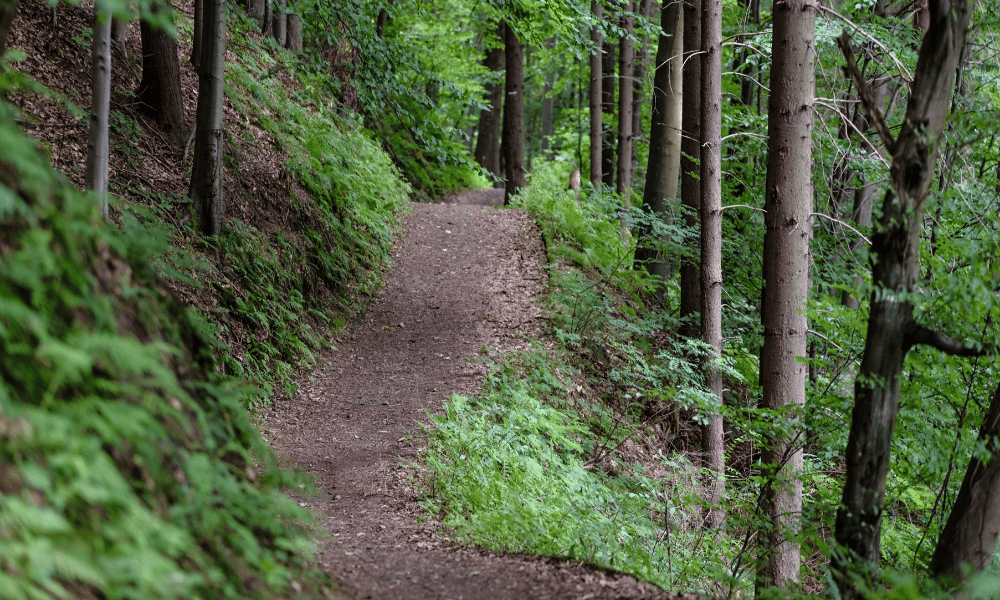
Nearby Attractions
Nepal's lakes are often near other significant attractions:
-
In Pokhara, apart from Fewa and Begnas Lakes, you can visit the World Peace Pagoda, Devi's Fall, and Mahendra Cave, and enjoy paragliding from Sarangkot.
-
Around Rara Lake, you can explore Rara National Park.
-
Gosaikunda Lake is on the popular Langtang Valley trek route, which offers beautiful landscapes and local culture.
-
Near Tilicho Lake, you can take on the Annapurna Circuit, one of the world's best trekking routes.
Travel Tips
-
Permits: For trekking in regions containing high-altitude lakes, you need to get a TIMS (Trekkers' Information Management System) card and necessary permits. These can usually be arranged in Kathmandu or Pokhara.
-
Safety: Be aware of altitude sickness when trekking to high-altitude lakes. Proper acclimatization and preparation are necessary.
-
Accommodation: Lakes like Fewa have numerous hotels and guest houses nearby. For high-altitude lakes, there are tea houses along the trekking routes, but they can be quite basic.
-
Respect Local Culture and Nature: When visiting sacred lakes, be respectful of local customs and rituals. Also, practice "Leave No Trace" principles to protect the natural environment.
Visiting the lakes of Nepal is not just about the lakes themselves but also about the journey. Enjoy the trek, interact with the local communities, and immerse yourself in the stunning beauty of Nepal.
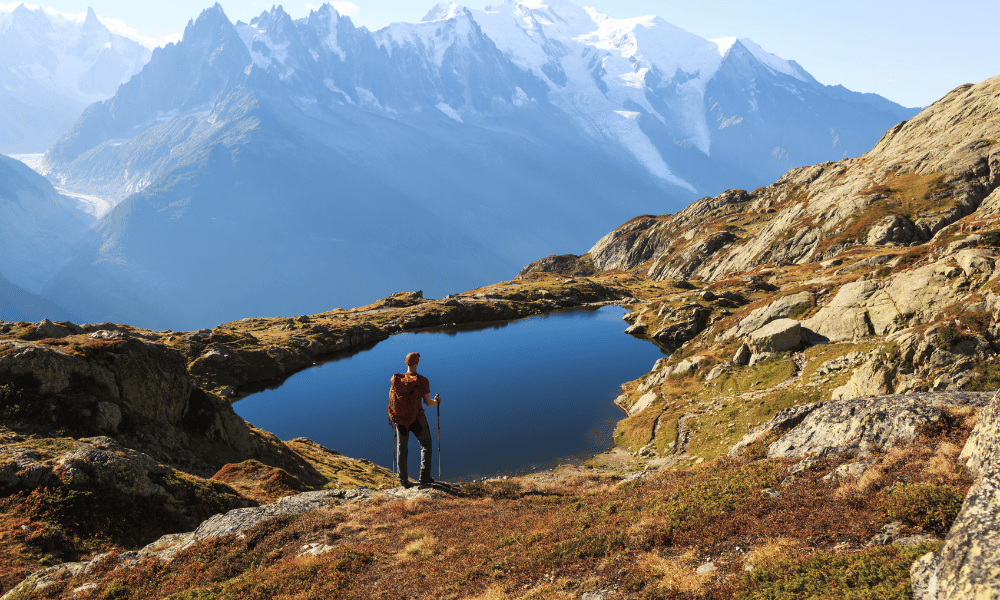
Conclusion
In conclusion, the lakes of Nepal are a treasure trove of natural beauty, ecological diversity, and cultural richness. From the high-altitude serenity of Gosaikunda and Tilicho to the charming tranquility of Fewa and Begnas, these lakes hold immense significance. They serve as vital habitats for various species, contribute to the local economies, and hold a special place in the hearts of the local communities and visitors alike.
However, the beauty and value of these lakes are under threat from climate change, pollution, and other human activities. The decrease in biodiversity and the risk to local livelihoods and cultural heritage underscore the urgency of conservation efforts.
As we revel in the beauty of these lakes and enjoy the activities they offer, it is important that we do so responsibly. Responsible tourism, which includes respecting local cultures, adhering to environmental guidelines, and contributing to the local economies in a sustainable manner, is crucial.
Moreover, supporting local and national conservation efforts is not just the responsibility of the locals, but of everyone who appreciates the lakes and what they represent. It is through collective effort and sustainable practices that we can ensure these lakes continue to enchant generations to come.
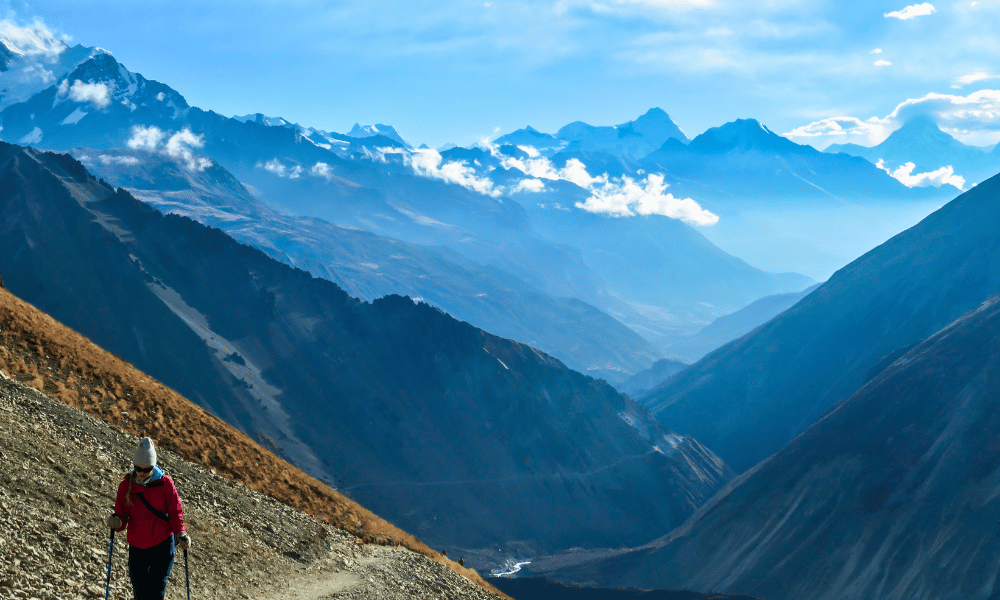
In preserving these lakes, we do more than just protect bodies of water. We safeguard a diverse array of life, both human and wildlife, that depends on these ecosystems. We also protect the deep cultural significance and the simple yet profound human joy that these lakes provide.
The lakes of Nepal are more than just a scenic destination; they are a testament to the intricate and intimate relationship between humans and nature. By striving to protect them, we are in many ways striving to preserve this precious relationship. We are also ensuring that the story these lakes tell – of beauty, biodiversity, and cultural intertwining – can continue to be told far into the future.



